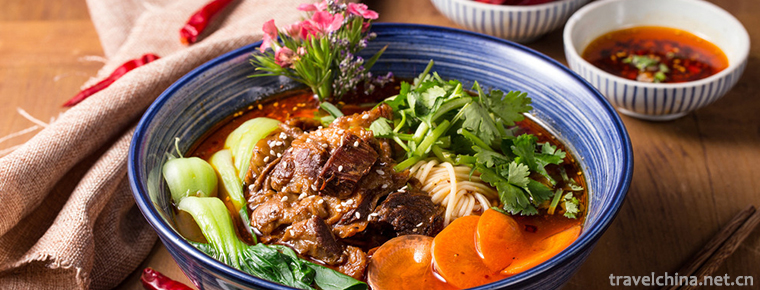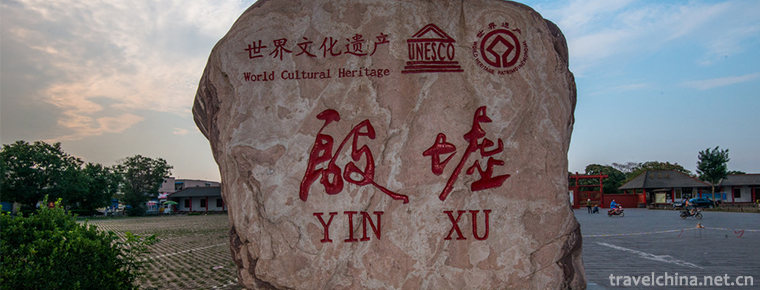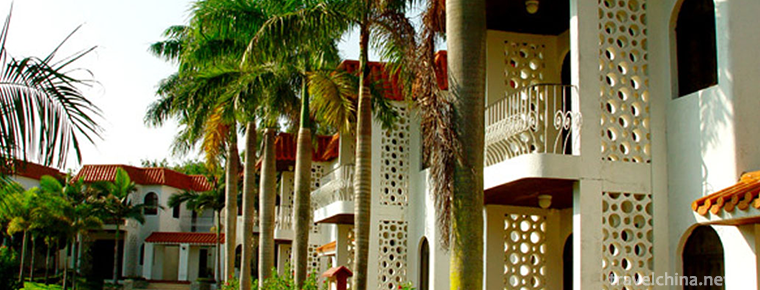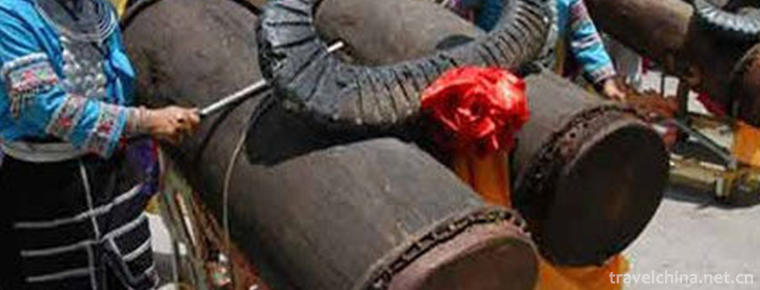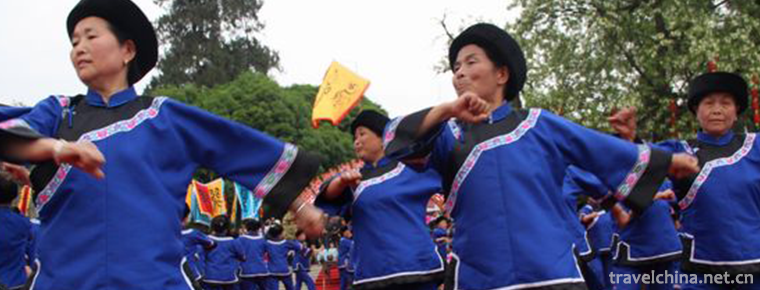Xitang Ancient Town Tourist Scenic Spot
Xitang Town, belonging to Jiashan County, Jiaxing City, Zhejiang Province, is located at the junction of Jiangsu, Zhejiang and Shanghai. It has an ancient name of Xietang, Pingchuan, Yaozhuang Town in the east, Tianning Town and Taozhuang Town in the west, Ganyao Town in the south, Luxu Town in the north. Its central geographic coordinates are 120 53', 30 56', 10 km from Jiashan City. The area is 83.61 square kilometers. Xitang Town is located in the water network area of Hangjiahu Plain and belongs to the East Asian monsoon area on the southern edge of the North Subtropical Zone.
By 2013, Xitang Town had 18 villages and 4 communities. In 2016, Xitang Town had 574,000 households and 29,000 migrants. In 2016, Xitang Town achieved a regional GDP of 5.44 billion yuan .
Xitang has a long history. It is one of the birthplaces of ancient Wu-Yue culture and one of the six ancient towns in the south of the Yangtze River. It is a thousand-year old water town of Wu local culture. During the Spring and Autumn Period and the Warring States Period, Wu and Yue were the border areas between the two countries, known as "Wugen Yuejiao" and "Yuejiao people". October 2003 was listed in the first batch of famous historical and cultural towns in China. In 2003, it was awarded the "Outstanding Achievement Award for the Protection of Cultural Heritage in the Asia-Pacific Region" by UNESCO. In 2006, Xitang Ancient Town was listed on the preparatory list of China's World Cultural Heritage . In 2017, Xitang Ancient Town was promoted to National 5A Tourist Scenic Area . On May 24, 2018, Xitang Town was selected as the top 50 small towns with the most beautiful characteristics.
Xitang, the ancient name of Xietang. In Ming Dynasty, Jianshi Town was named Xitang after Xitang, which borders Yongan and Qianshan townships.
In the fifth year of Xuande in Ming Dynasty (1430), Jiashan County was built, and the county was first proposed to be located in Xietang. In the twelve years of orthodoxy (1447), the Taozhuang Taxation Bureau moved to Xietang City, which is called Xietang City in Hongzhi of the Ming Dynasty. Zhengde (1506-1521), known as Xitang Town.
In the thirty-fifth year of Jiajing in Ming Dynasty (1556), Japanese invaders invaded and the markets around Xigutan were destroyed, then moved eastward gradually. Wanli Zhong was renamed Xietang Town. In the thirty-eighth year of Emperor Qianlong (1733), the county ministry was set up in Wangjiajiao Township. Tongzhi eight years (1869), moved to the east of Nantangqiao Yaqian Street, until the end of the Qing Dynasty abandoned.
At the beginning of the Republic of China, local autonomy was implemented. The county was divided into 12 autonomous regions. Xitang Town was the seat of Xitang Autonomous Region's public office.
In the nineteenth year of the Republic of China (1930), the county was re-divided into four districts, and Xitang was established as the third district of Jiashan County.
In the twenty-third year of the Republic of China (1934), the establishment of the district was abolished. It was directly under the county government and set up Xitang Town Public Office in Yaqian Street.
In the twenty-sixth year of the Republic of China (1937), on November 11 (the ninth day of October on the lunar calendar), Xitang was occupied.
In May 1949, Xitang was liberated and the Xitang District People's Government was established on June 5, 1949.
In June 1951, Xitang Town was transformed into a town directly under the county.
In March 1981, the revolutionary committees of societies and towns were abolished and the Xitang Commune Management Committee and the Xitang Town People's Government were restored.
In January 1984, the Administration Committee of Xitang Commune was changed to Xitang Township People's Government.
In June 1985, Xitang Township was abolished and merged into Xitang Township.
In September 1986, Xitang Town was approved as a satellite town in Shanghai Economic Development Zone.
In 1992, Zhendong, Zhenxi, Shendao and Zhennan were built.
In August 1996, the Town Aquaculture Villagers'Committee abolished the administrative system and established Xitang Aquaculture Farm.
In 1997, the Town People's Government Building was relocated to Nanyuan Road.
Xitang Town is located in the north of Jiashan County, Yaozhuang Town to the east, Tianning Town to the west, Taozhuang Town to the south, Ganyao Town to the north, Luxu Town to the north. Its central geographic coordinates are 120 degrees 53', 30 degrees 56', 78 kilometers north of Suzhou, 9 kilometers south of Jiashan County Town, 80 kilometers east of Shanghai City, and 100 kilometers west of Hangzhou. The administrative area of the town is 83.61 square kilometers.
topographic features
Xitang Town is located in the water network area of Hangjiahu Plain. Its terrain is flat and its stratum is covered by Quaternary system. It is composed of river, lake and shallow sea sediments. There are mainly Xitang Port, Shangtang Port and Xilu Port in the North-South direction, Hongqitang Port in the East-West direction, Xinjinggang Port and Qijingtang Port in the East-West direction. Xitang Town has a low terrain with an average elevation of 1.60 meters (Yellow Sea elevation, the same below).
hydrology
Xitang Town is located in the Hangjiahu Plain water network area of Taihu Basin and belongs to the canal water system. Therefore, the flow speed of the river is gentle and the seasonal variation of water level is significant. Typhoon rainstorms in summer and autumn often cause the sudden rise of river water, while the water level in winter is low.
climate
Xitang Town belongs to the East Asian monsoon area on the southern edge of the North Subtropical Zone. It has the characteristics of mild and humid, distinct seasons and abundant rainfall. Monsoon is the main factor affecting climate, and the temperature is characterized by cold winter and hot summer. Most of the precipitation days are concentrated from April to September, accounting for more than 65% of the annual rainfall. Among them, April and May are alternating spring and summer monsoon, continuous low temperature and rainy, continuous "spring rain" and June and July are "plum rain" periods. Due to the influence of monsoon climate, southeast-east wind prevails in summer and northwest wind prevails in winter.









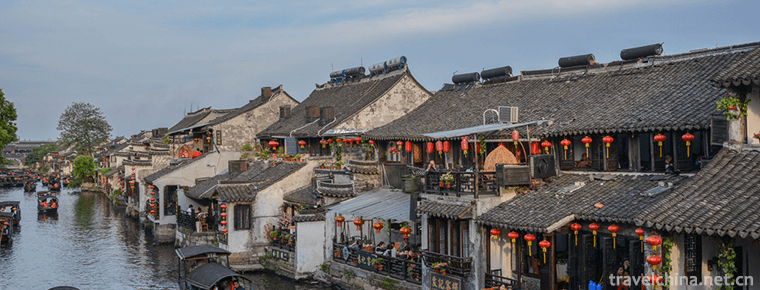
-
Lanzhou handpulled noodlesLanzhou Beef Noodles
Lanzhou beef noodles, also known as Lanzhou clear soup beef noodles, is one of the "top ten noodles in China", and is a delicious snack in Lanzhou area of Gansu Province.
Views: 123 Time 2018-11-02 -
Yin Ruins Scenic Area (Yin xu)
Yin Ruins, formerly known as "Northern Mongolia" , is the ruins of the capital city in the late Shang Dynasty of China, located in Anyang City, Henan Province.
Views: 199 Time 2018-12-09 -
Blue Moon Bay Hot Spring Resort
Lanyuewan Hot Spring Resort is the largest four-star garden-style foreign-related hotel and national AAAA-level tourist scenic spot in Western Guangdong. It is located in the quiet "Guangzhou Bay.
Views: 183 Time 2019-01-29 -
Tianjin Water Park
Tianjin Water Park, formerly known as Qinglongtan, as a scenic resort, can be traced back to the beginning of the last century. It was officially opened to tourists on July.
Views: 158 Time 2019-02-21 -
Baxian longevity noodles
Make it with Udonghua noodles. With turtle, old turtle boiled soup, turtle has a nourishing role, old turtle represents longevity. Take shrimp, squid, sea cucumber, black fish balls.
Views: 173 Time 2019-03-27 -
The Craft of Juchunyuan Buddha Jumping Wall
"Buddha Jumping Wall" is the first famous dish in Fujian cuisine. It is well-known at home and abroad for its exquisite materials, unique preparation method and strong flavor.
Views: 116 Time 2019-05-08 -
Wooden drum dance
Wood drum dance is a kind of folk dance that is spread among the Miao, Yi and Wa people in southwest China to dance and sacrifice by beating wood drum. Its drum shape is mostly to intercept the trunk .
Views: 198 Time 2019-06-06 -
Tujia Waving Dance
Hand-waving dance is an ancient traditional dance of Tujia nationality. It mainly spreads in the Youshui River and Wujiang River basin at the junction of Hubei, Hunan, Chongqing and Guizhou. It mainly.
Views: 106 Time 2019-06-23 -
Traditional craftsmanship of moon cakes
Guo Dulin Jin-style moon cakes are Shanxi specialty. They are simple in shape, mellow in taste, crisp and refreshing, sweet but not greasy. They are famous for their crispness, delicacy, sweetness, me.
Views: 192 Time 2019-07-16 -
Rongxian Giant Buddha
Located in the eastern suburb of Rongxian County, Sichuan Province, the Giant Buddha of Rongxian county is carved in the Tang Dynasty. It is a cliff carved statue of Sakyamuni, 36.67 meters high, 8.76 meters long, 12.67 meters wide, 12 meters high and 3.5 meters wide. It is the world's largest Sakyamuni Buddha (Modern Buddha)..
Views: 329 Time 2020-10-15 -
Deyang scenic spot
There are Sanxingdui ancient Shu civilization sites in Deyang City, where a large number of national treasure level cultural relics such as bronze Dali Man, bronze mask, bronze sacred tree, gold stick and Bian Zhang were unearthed. There are also the pangtong.
Views: 299 Time 2020-12-14 -
Dazhou climate
Dazhou city belongs to subtropical humid monsoon climate type. Due to the complex topography, regional climate differences are large. The low mountains, hills and river valleys with an altitude of 800 meters have mild climate, warm winter, early sprin.
Views: 384 Time 2020-12-20
